|
Displaying items by tag: Philadelphia Antiques Show
The 2016 Philadelphia Antiques Show will kick off with a Preview Party on Thursday, April 14, on the Marine Parade Grounds at...
To continue reading this article about the 2016 Philadelphia Antiques Show, please visit InCollect.com.
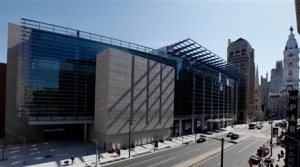
The prestigious Philadelphia Antiques Show announced that they have appointed Catherine Sweeney Singer as Director of the event. She will be the first person to fulfill the newly implemented position. As the Director, Singer will work with exhibitors, the Show Board, and the Advisory Committee to help all branches meet their short- and long-term goals. The Kentucky-based art and antiques show management company, Keeling Waingwright Associates, previously oversaw the Philadelphia Antiques Show.
Singer is well known in the art and antiques world and beyond as she has served as Executive Director of the seminal Winter Antiques Show in New York for the past 20 years. In addition, Singer is the Director of the American Art Fair and has consulted on the recent iteration of Asia Week in New York and The New York Botanical Garden’s annual garden antiques show. Prior to her event planning, marketing and exhibition development endeavors, Singer was the first Associate Publisher and Advertising Director of Art & Auction and for the re-launch of Art & Antiques.
The Philadelphia Antiques Show, which is in its 53rd year, is one of the finest Americana shows in the world. It will be held from April 26, 2014 through April 29, 2014 at the Pennsylvania Convention Center.
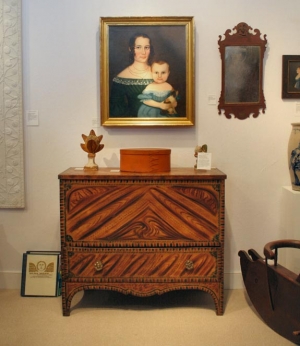
PHILADELPHIA, PA. - Philadelphia Antiques Show organizers are positioning their long-running fair for the future.
Following the close of 50th anniversary festivities at the city’s Navy Pier from April 8-12, the 200-member committee charged with planning the annual benefit for Penn Medicine is getting to work on the 2012 show, which will have new dates, April 27-May 1, and a new location, the Pennsylvania Convention Center in downtown Philadelphia.
The fair was forced from its home of 46 years, the 32th Street Armory, in 2008. It briefly settled on the outskirts of the city at Navy Pier but recently learned that another tenant in the sprawling complex, Urban Outfitters, is taking over the space. Gretchen Riley, the 2012 show chairman, briefed the fair’s 51 exhibitors on the changes at an annual wrap-up meeting on April 12.
“We are reinventing ourselves for the next fifty years. Times are changing and we have to appeal to a younger demographic,” Riley later told Antiques and Fine Art by phone, cautioning that attorneys for Penn Medicine are still reviewing the Convention Center contract, which she expects will be signed.
Riley and others anticipate that attendance will increase with a move back to Center City, where visitors enjoy a greater range of amenities and transportation options. Riley quelled exhibitors’ concerns when she said that neither booth rates nor the size of the show is likely to change much. Penn will provide dealer parking, which was also a concern to some exhibitors.
“I personally think that the new show dates are better, from the perception of both buyers and sellers, who will have more time to stock fresh material,” said Fred Giampietro, an exhibitor from New Haven, Ct. Giampietro and others have suggested that the Philadelphia Antiques Show be shortened, that the dateline be extended, and that the number of exhibitors be increased to around 70.
“Philadelphia should remain an American show but, by expanding the dateline into the 20th century, it could include Wharton Esherick, George Nakashima, the New Hope school and other important regional specialties,” said Giampietro. A major sale for the Connecticut folk art specialist was a life-sized carved and painted Punch tobacconist figure of 1880. The sculpture had been off the market for fifty years.
Among the show’s handful of 20th century design specialists are Dalton’s Decorative Arts of Syracuse, N.Y., which featured a Gustav Stickley books cabinet of circa 1901; JAGR Projects of Philadelphia, emphasizing international expressions of the Arts & Crafts movement ; and Lillian Nassau LLC of Manhattan.
“Tiffany is what our clients are looking for and Philadelphia continues to be a great show for us,” said Nassau’s Arlie Sulka, who rounded out her display of Tiffany lighting with “Playing Dogs,” a bronze of 1916 by William Hunt Dietrich.
“I had one of my best shows in ten years,” said exhibitor Diana Bittel. A favorite of Philadelphia collectors, Bittel sold chests, weathervanes, shell-work pieces and a clock.
“We sold quite a bit on opening night,” said Chinese export porcelain specialist John Suval, whose centerpiece was a decorated punchbowl of circa 1790, $35,000.
Joan Brownstein, a Newbury, Ma., specialist in American folk painting, sold “Girl in A Paint Decorated Chair,” an oil on poplar panel of around 1825. Brownstein’s research on the painting, from a group of not yet identified portraits, appears in the Spring 2011 issue of Antiques and Fine Art.
“Most of our sales this year were over the weekend, said Ed Hild of Olde Hope Antiques, whose impeccably appointed stand featured an iconic South Shaftsbury, Vt., painted chest of circa 1825, priced $285,000. “We wrote up folk art, paintings and accessories but furniture was soft for us.”
Tillou Gallery sold a signed Fiske & Co., cast-iron recumbent stag dating to the late 19th century. Jonathan Trace of Portsmouth, N.H., parted with a writing table that was probably made in North Carolina or Virginia. It went to a delighted Virginia collector, Peter Barretta.
Needlework specialist Amy Finkel’s opening night sales included an exceptional Chester County, Pa., sampler dated 1798. A closely related sampler, formerly in the collection of Theodore H. Kapnek, is illustrated in The Flowering of American Folk Art. Finkel also sold an important Ohio sampler and two Philadelphia samplers.
“We came back for the 50th anniversary,” said returning exhibitor Suzanne Courcier of Courcier & Wilkins. The Yarmouth Port, Ma., dealers covered their side wall with a Baltimore album quilt, $32,000, that was featured in Robert Bishop’s New Discoveries in American Quilts in 1975.
Notable among Christopher Rebollo’s many sales was a pair of oil on canvas portraits of about 1808-1810 that are attributed to Jacob Eichholtz. The subjects are Benjamin Schaum and Maria Schaum of Lancaster, Pa. The Mechanicsville, Pa., dealer also wrote up a portrait of Hannah Claypoole, attributed to James Claypoole.
From two mid-19th century oil on canvas portraits of George Washington at Schwarz Gallery of Philadelphia to Allan Katz’s 1874 oil on canvas portrait of the steamship Daniel Drew with Prospect Park Hotel by James Bard, the Philadelphia Show excels in the field of Americana. A 34-inch tall Father Time figure from a fraternal lodge was $135,000 at Hill Gallery of Birmingham, Mi.
Early New England furniture included a Rhode Island William & Mary dressing table with crossed stretchers and ball feet, $95,000, and a musical tall-case clock by Asa Munger of Herkimer, N.Y., $225,000, at Nathan Liverant & Son. A circa 1690 carver chair, $38,500; a ball-turned gate-leg table, probably from Massachusetts, $19,500; and an inscribed William & Mary chest, $12,000, were highlights at Peter Eaton Antiques, Newbury, Ma.
West Chester, Pa., dealer Skip Chalfant of H.L. Chalfant Antiques featured an unusual splay-legged walnut table, $46,000, that may be from Virginia or Pennsylvania. A similar table, formerly owned by Joe Kindig, is pictured in Paul Burrough’s classic text, Southern Furniture.
In a nod to the city, several exhibitors brought prominent works by Philadelphia cabinetmaker Joseph Barry. One example, at Carswell Rush Berlin, was a mahogany sideboard carved with female herms wearing turbans. It dated to 1820.
From the preview party, which drew 1,000 guests on April 8, to the Antique Dealers Association’s sold-out dinner for Morrison Heckscher on April 9, to lectures by designer Alexa Hampton, art-crime expert Robert K. Wittman and floral artist Jane Godshalk, accompanying events were heavily subscribed.
“In some ways, this was the end of an era,” reflected outgoing show chairman Patricia W. Cheek.
“Next year we will pull out all the stops,” added Riley, who is saving the announcement of the 2012 loan show for the moment that the Convention Center contract is signed.
Write to Laura Beach at This email address is being protected from spambots. You need JavaScript enabled to view it..
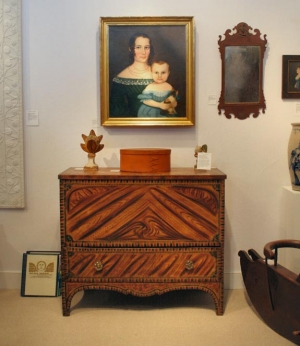
PHILADELPHIA, PA. - Philadelphia Antiques Show organizers are positioning their long-running fair for the future.
Following the close of 50th anniversary festivities at the city’s Navy Pier from April 8-12, the 200-member committee charged with planning the annual benefit for Penn Medicine is getting to work on the 2012 show, which will have new dates, April 27-May 1, and a new location, the Pennsylvania Convention Center in downtown Philadelphia.
The fair was forced from its home of 46 years, the 32th Street Armory, in 2008. It briefly settled on the outskirts of the city at Navy Pier but recently learned that another tenant in the sprawling complex, Urban Outfitters, is taking over the space. Gretchen Riley, the 2012 show chairman, briefed the fair’s 51 exhibitors on the changes at an annual wrap-up meeting on April 12.
“We are reinventing ourselves for the next fifty years. Times are changing and we have to appeal to a younger demographic,” Riley later told Antiques and Fine Art by phone, cautioning that attorneys for Penn Medicine are still reviewing the Convention Center contract, which she expects will be signed.
Riley and others anticipate that attendance will increase with a move back to Center City, where visitors enjoy a greater range of amenities and transportation options. Riley quelled exhibitors’ concerns when she said that neither booth rates nor the size of the show is likely to change much. Penn will provide dealer parking, which was also a concern to some exhibitors.
“I personally think that the new show dates are better, from the perception of both buyers and sellers, who will have more time to stock fresh material,” said Fred Giampietro, an exhibitor from New Haven, Ct. Giampietro and others have suggested that the Philadelphia Antiques Show be shortened, that the dateline be extended, and that the number of exhibitors be increased to around 70.
“Philadelphia should remain an American show but, by expanding the dateline into the 20th century, it could include Wharton Esherick, George Nakashima, the New Hope school and other important regional specialties,” said Giampietro. A major sale for the Connecticut folk art specialist was a life-sized carved and painted Punch tobacconist figure of 1880. The sculpture had been off the market for fifty years.
Among the show’s handful of 20th century design specialists are Dalton’s Decorative Arts of Syracuse, N.Y., which featured a Gustav Stickley books cabinet of circa 1901; JAGR Projects of Philadelphia, emphasizing international expressions of the Arts & Crafts movement ; and Lillian Nassau LLC of Manhattan.
“Tiffany is what our clients are looking for and Philadelphia continues to be a great show for us,” said Nassau’s Arlie Sulka, who rounded out her display of Tiffany lighting with “Playing Dogs,” a bronze of 1916 by William Hunt Dietrich.
“I had one of my best shows in ten years,” said exhibitor Diana Bittel. A favorite of Philadelphia collectors, Bittel sold chests, weathervanes, shell-work pieces and a clock.
“We sold quite a bit on opening night,” said Chinese export porcelain specialist John Suval, whose centerpiece was a decorated punchbowl of circa 1790, $35,000.
Joan Brownstein, a Newbury, Ma., specialist in American folk painting, sold “Girl in A Paint Decorated Chair,” an oil on poplar panel of around 1825. Brownstein’s research on the painting, from a group of not yet identified portraits, appears in the Spring 2011 issue of Antiques and Fine Art.
“Most of our sales this year were over the weekend, said Ed Hild of Olde Hope Antiques, whose impeccably appointed stand featured an iconic South Shaftsbury, Vt., painted chest of circa 1825, priced $285,000. “We wrote up folk art, paintings and accessories but furniture was soft for us.”
Tillou Gallery sold a signed Fiske & Co., cast-iron recumbent stag dating to the late 19th century. Jonathan Trace of Portsmouth, N.H., parted with a writing table that was probably made in North Carolina or Virginia. It went to a delighted Virginia collector, Peter Barretta.
Needlework specialist Amy Finkel’s opening night sales included an exceptional Chester County, Pa., sampler dated 1798. A closely related sampler, formerly in the collection of Theodore H. Kapnek, is illustrated in The Flowering of American Folk Art. Finkel also sold an important Ohio sampler and two Philadelphia samplers.
“We came back for the 50th anniversary,” said returning exhibitor Suzanne Courcier of Courcier & Wilkins. The Yarmouth Port, Ma., dealers covered their side wall with a Baltimore album quilt, $32,000, that was featured in Robert Bishop’s New Discoveries in American Quilts in 1975.
Notable among Christopher Rebollo’s many sales was a pair of oil on canvas portraits of about 1808-1810 that are attributed to Jacob Eichholtz. The subjects are Benjamin Schaum and Maria Schaum of Lancaster, Pa. The Mechanicsville, Pa., dealer also wrote up a portrait of Hannah Claypoole, attributed to James Claypoole.
From two mid-19th century oil on canvas portraits of George Washington at Schwarz Gallery of Philadelphia to Allan Katz’s 1874 oil on canvas portrait of the steamship Daniel Drew with Prospect Park Hotel by James Bard, the Philadelphia Show excels in the field of Americana. A 34-inch tall Father Time figure from a fraternal lodge was $135,000 at Hill Gallery of Birmingham, Mi.
Early New England furniture included a Rhode Island William & Mary dressing table with crossed stretchers and ball feet, $95,000, and a musical tall-case clock by Asa Munger of Herkimer, N.Y., $225,000, at Nathan Liverant & Son. A circa 1690 carver chair, $38,500; a ball-turned gate-leg table, probably from Massachusetts, $19,500; and an inscribed William & Mary chest, $12,000, were highlights at Peter Eaton Antiques, Newbury, Ma.
West Chester, Pa., dealer Skip Chalfant of H.L. Chalfant Antiques featured an unusual splay-legged walnut table, $46,000, that may be from Virginia or Pennsylvania. A similar table, formerly owned by Joe Kindig, is pictured in Paul Burrough’s classic text, Southern Furniture.
In a nod to the city, several exhibitors brought prominent works by Philadelphia cabinetmaker Joseph Barry. One example, at Carswell Rush Berlin, was a mahogany sideboard carved with female herms wearing turbans. It dated to 1820.
From the preview party, which drew 1,000 guests on April 8, to the Antique Dealers Association’s sold-out dinner for Morrison Heckscher on April 9, to lectures by designer Alexa Hampton, art-crime expert Robert K. Wittman and floral artist Jane Godshalk, accompanying events were heavily subscribed.
“In some ways, this was the end of an era,” reflected outgoing show chairman Patricia W. Cheek.
“Next year we will pull out all the stops,” added Riley, who is saving the announcement of the 2012 loan show for the moment that the Convention Center contract is signed.
Write to Laura Beach at This email address is being protected from spambots. You need JavaScript enabled to view it..
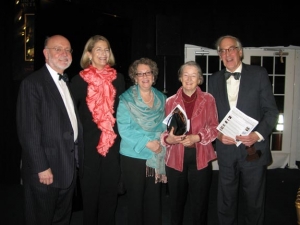
The Philadelphia Antiques Show celebrated its fiftieth year this April 9-12, 2011. Held at the 40,000-square foot Philadelphia Cruise Terminal at Pier One, the show featured fifty exhibitors. Known as the top Americana antiques show in the country, leading exhibitors offered furniture, folk art, and decorative and fine art of exceptional quality, ranging from regional Pennsylvania material and expanding along the eastern seacoast and including England. To mark the fiftieth year, the loan exhibition was entitled “Celebrations….Antiques that Mark the Moment,” which featured furniture and fine and decorative arts that related to important communal or personal events or times in the lives of their creators or owners. The success of the show was furthered by its marking of five decades as the major fundraiser for Penn Medicine.
For the past nine years, the Antiques Dealers’ Association of America (ADA) has presented the ADA Award of Merit to an individual who has made major contributions to the field. This year’s recipient was Morrison H. Heckscher, the Lawrence A. Fleischman Chairman of the American Wing at The Metropolitan Museum of Art in New York City. The gala dinner was followed by speakers who provided fond reminiscences of their years knowing and working with Mr. Heckscher.
What follows are a selection of photographs from the show floor and the ADA dinner.
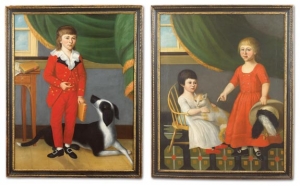
Widely recognized as the premier American antiques and decorative arts show in the country, the Philadelphia Antiques Show has a lot to celebrate in 2011. Since its inception in 1962, the Show has raised more than $17 million to help further innovative programs with a direct impact on patient care and has been a major fundraiser for Penn Medicine. The 2011 Philadelphia Antiques Show, presented by Drexel Morgan & Company, the parent company of the Show’s six year-running title sponsor, the Haverford Trust Company, is expected to raise nearly $1 million to benefit development of the Penn Ovarian Cancer Research Center.
The 2011 Philadelphia Antiques Show’s Preview will be held Friday, April 8 and the Show runs through Tuesday, April 12, 2011, at The Navy Yard, Philadelphia Cruise Terminal at Pier One. Led by founder Ali Brown, the show premiered on April 24, 1962 as the University Hospital Antiques Show at the 33rd Street Armory in West Philadelphia. The Show’s debut was a huge success, welcoming 5,000 visitors and raising over $30,000—more than three times what was expected. Throughout the years, the Show’s names included the University Hospital Antiques Show, the Hospital of the University of Pennsylvania Antiques Show, which it assumed in 1986, and the Philadelphia Antiques Show in 1989, which it still remains.
Since the beginning, the Show’s committee—now comprised of more than 200 volunteers—has determined how funds from the Show are allocated. Over the past half century, these proceeds have provided great assistance to Penn Medicine. Funds from the first Show paid off the Nearly New Shop’s mortgage, and the following year provided enough to aid the Hospital Chapel in adding a meditation room, a Christian altar and a Hebrew worship place. The Philadelphia Antiques Show has also helped fund initiatives such as the Trauma Center, the Multi-organ Transplant Program and the Penn Lung Center—all of which are major programs that have helped to make Penn Medicine the leader in medicine that it is today.
|
|
|
|
|